Transforming Remote Site Living: Lida Group’s High-Quality Container Houses Provide Superior Prefab Building Comfort for Workers
2025-Aug-27 16:51:34
By Admin
1. Introduction
Remote work sites—spanning mining operations in arid deserts, infrastructure projects in mountainous regions, and energy developments in isolated coastal areas—are critical to global economic growth. Yet, for the millions of workers deployed to these locations, living conditions have long been a persistent challenge. Traditional on-site accommodation, often consisting of makeshift tents, poorly insulated shacks, or repurposed shipping containers with minimal upgrades, fails to address basic human needs for comfort, safety, and well-being. Extreme temperatures, inadequate ventilation, limited access to clean water and sanitation, and cramped living spaces not only erode workers’ quality of life but also hinder productivity, increase turnover rates, and raise safety risks.
In recent decades, the prefabricated (prefab) building industry has emerged as a solution to these challenges, but few companies have prioritized “comfort” as a core design principle—until Lida Group. A global leader in prefab construction technology, Lida Group has redefined remote site living by engineering high-quality container houses that merge the efficiency of prefab manufacturing with a relentless focus on worker comfort. Unlike generic prefab structures that prioritize cost or speed over livability, Lida Group’s container houses are tailored to the unique demands of remote environments, incorporating advanced insulation, climate control, ergonomic layouts, and modern amenities that make long-term stays not just bearable, but comfortable.
This article explores how Lida Group’s innovative approach to prefab container houses is transforming remote site living. It examines the technical features that drive superior comfort, the real-world applications across diverse industries, the impact on worker well-being and project outcomes, and the future trends shaping the evolution of remote accommodation. By centering workers’ needs in every stage of design and production, Lida Group has set a new standard for what remote site housing can—and should—be.

2. The Case for Comfort in Remote Site Housing: Why It Matters
Before delving into Lida Group’s solutions, it is critical to understand why comfort in remote site housing is more than a “luxury”—it is a strategic necessity. Remote work sites often operate in harsh, isolated conditions where workers spend weeks or months away from their families. Poor living conditions exacerbate stress, fatigue, and mental health challenges, leading to a cascade of negative consequences for both workers and project operators.
2.1 The Hidden Costs of Poor Accommodation
Studies by the International Labour Organization (ILO) show that workers in remote sites with substandard housing report 30% higher rates of fatigue-related accidents and 25% lower productivity compared to those in comfortable accommodations. High turnover is another costly issue: construction and mining companies in remote regions often face 15-20% monthly turnover due to poor living conditions, leading to increased recruitment costs, project delays, and knowledge loss. Mental health is equally affected: a 2023 survey of remote site workers found that 48% of those living in inadequate housing reported symptoms of anxiety or depression, compared to 18% of workers in well-designed accommodation.
Traditional remote housing fails in three key areas:
- Climate Adaptability: Tents and basic shacks offer little protection against extreme heat, cold, or humidity, forcing workers to endure uncomfortable (and sometimes dangerous) indoor temperatures.
- Basic Amenities: Many sites lack reliable hot water, proper sanitation, or functional kitchens, forcing workers to compromise on hygiene and nutrition.
- Space and Privacy: Cramped shared rooms with no personal space erode dignity and increase conflict among workers, further reducing well-being.
2.2 Lida Group’s Comfort-Centric Philosophy
Lida Group recognizes that comfortable workers are safer, more productive, and more likely to stay on the job. The company’s design philosophy is rooted in the idea that “remote” does not have to mean “uncomfortable.” Every feature of Lida Group’s container houses—from insulation materials to furniture layout—is engineered to address the physical and psychological needs of remote workers. This approach has not only improved worker satisfaction but also delivered tangible value to project operators, including lower turnover, faster project timelines, and reduced safety incidents.
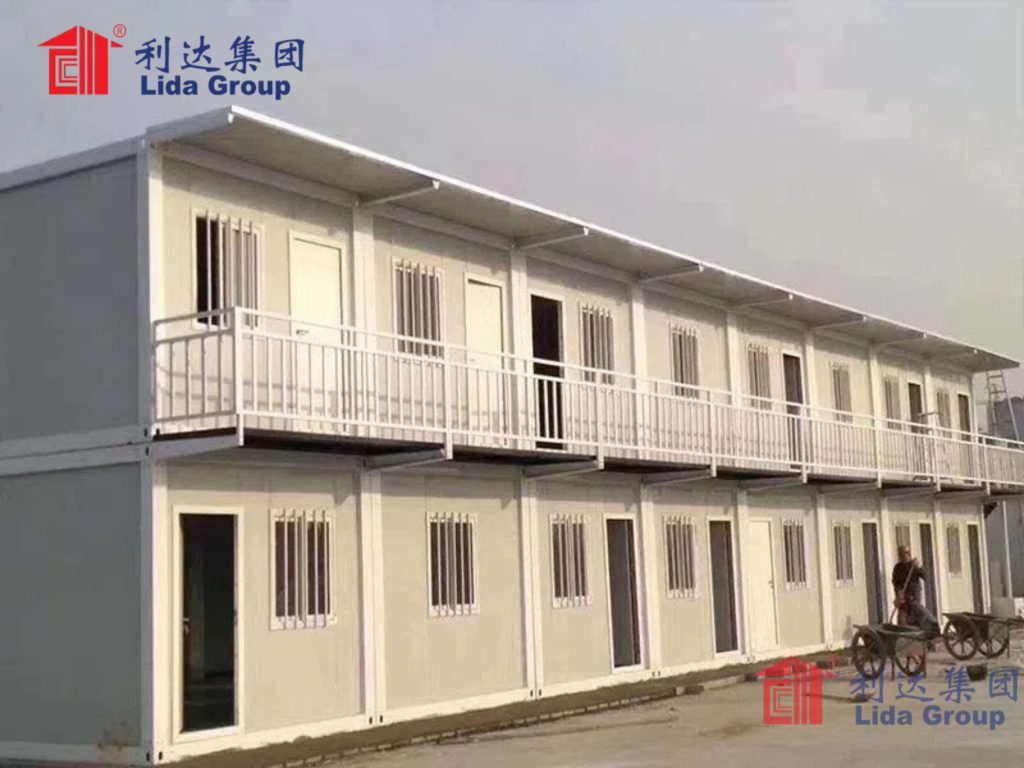
3. Lida Group’s Prefab Technology: The Foundation of Comfort
Lida Group’s ability to deliver superior comfort in remote settings stems from its advanced prefab manufacturing process. Unlike on-site construction, which is limited by weather, labor skills, and material availability, Lida Group’s off-site production ensures consistent quality, precise engineering, and the integration of comfort-focused features that would be difficult to implement in traditional builds.
3.1 Core Prefab Principles for Comfort
Lida Group’s prefab technology is built on two pillars that directly support comfort: modular design and controlled factory production.
3.1.1 Modular Design: Flexibility to Meet Comfort Needs
Lida Group’s container houses are constructed as standardized modules—each serving a specific function, such as sleeping, bathing, cooking, or recreation. This modular approach allows for:
- Customizable Layouts: Modules can be combined to create living spaces tailored to the number of workers and site requirements. For example, a single worker might occupy a 20-square-meter module with a private bedroom and bathroom, while a team of four could share a 40-square-meter module with separate sleeping quarters and a shared living area.
- Targeted Comfort Features: Different modules can be equipped with specialized features for specific environments. A bathroom module for a cold-climate site might include under-floor heating, while a kitchen module for a hot desert site could have energy-efficient cooling and extra storage for perishable food.
- Easy Expansion: As project teams grow, additional modules can be added without disrupting existing housing—a critical advantage for remote sites where scaling accommodation quickly is often necessary.
3.1.2 Controlled Factory Production: Consistency and Quality
All modules are manufactured in Lida Group’s state-of-the-art factories, where strict quality control and precision engineering ensure that comfort features work reliably, even in harsh conditions. Factory production offers three key benefits for comfort:
- Precision Insulation: Factory workers install insulation materials (such as high-density polyurethane foam or rock wool) with exacting standards, eliminating gaps that cause heat loss in cold weather or heat gain in hot weather. This ensures consistent indoor temperatures year-round.
- Reliable Plumbing and Electrical Systems: Plumbing and electrical components are pre-installed and tested in the factory, reducing the risk of leaks, power outages, or malfunctions that would disrupt access to hot water, lighting, or climate control.
- Durable Finishes: Factory-applied finishes—such as scratch-resistant flooring, moisture-proof wall panels, and rust-resistant exteriors—are designed to withstand heavy use and remote site conditions, maintaining comfort and aesthetics over time.
3.2 Key Technical Features for Comfort
Lida Group’s container houses incorporate a range of technical innovations that directly enhance comfort. These features are not afterthoughts—they are integrated into the design from the start, ensuring they work seamlessly together.
3.2.1 Advanced Insulation Systems
Insulation is the backbone of comfort in extreme environments, and Lida Group uses a multi-layered approach to ensure optimal thermal performance:
- Exterior Layer: The outer shell of each container is made from galvanized steel coated with a weather-resistant polymer, which reflects sunlight and prevents corrosion.
- Insulation Layer: Between the outer and inner walls, Lida Group uses either polyurethane foam (with a thermal conductivity of 0.024 W/(m·K)) or rock wool (0.045 W/(m·K)), both of which exceed industry standards for thermal resistance. For cold climates, an additional layer of vacuum-insulated panels (VIPs) can be added, reducing heat loss by up to 50%.
- Interior Layer: The inner walls are lined with moisture-resistant gypsum board or wood-veneer panels, which add an extra layer of insulation while creating a warm, home-like interior.
This multi-layered system ensures that indoor temperatures remain stable—between 18-24°C (64-75°F)—even when external temperatures range from -30°C (-22°F) in Arctic regions to 50°C (122°F) in desert areas.
3.2.2 Smart Climate Control
Lida Group’s container houses are equipped with energy-efficient climate control systems that adapt to changing environmental conditions:
- Heating, Ventilation, and Air Conditioning (HVAC): For moderate climates, compact split-system HVAC units provide both heating and cooling, with programmable thermostats that allow workers to adjust temperatures to their preferences.
- Heat Pumps: In extreme cold or hot climates, air-source or ground-source heat pumps are used. These systems are 300% more energy-efficient than traditional heaters or air conditioners, reducing energy costs while maintaining comfort.
- Natural Ventilation: For milder climates, large double-glazed windows and operable roof vents allow for natural airflow, reducing reliance on mechanical systems and improving indoor air quality.
3.2.3 Water and Sanitation Systems
Access to clean water and proper sanitation is a non-negotiable aspect of comfort, and Lida Group’s container houses are designed to address these needs even in water-scarce remote sites:
- Water Filtration: Integrated reverse-osmosis (RO) systems purify groundwater or collected rainwater, ensuring a reliable supply of drinking water.
- Hot Water: On-demand water heaters—powered by solar panels, propane, or electricity—provide instant hot water for bathing and cooking, eliminating the need to wait for water to heat up.
- Sanitation: Bathroom modules include low-flow toilets (using 40% less water than traditional models) and separate showers with water-saving fixtures. For sites without sewage systems, compact septic tanks or composting toilets are available, ensuring hygiene without relying on external infrastructure.
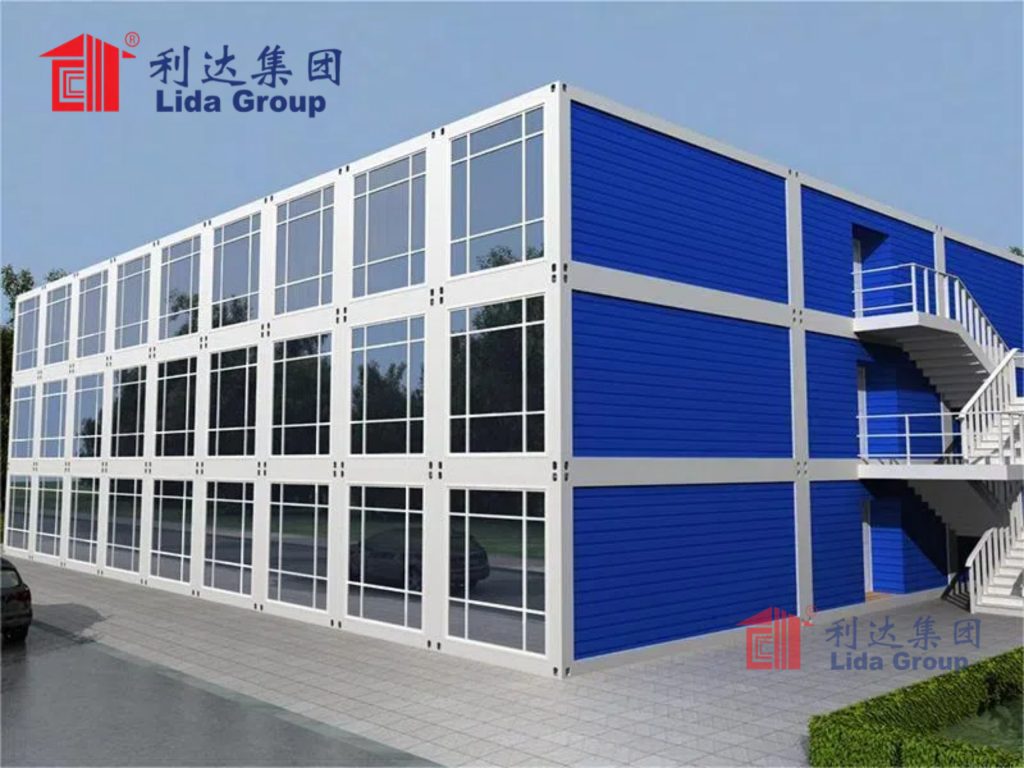
4. Designing for Comfort: Beyond Technical Features
While advanced technology lays the groundwork for comfort, Lida Group goes further by focusing on the “human-centric” design of its container houses. This includes optimizing space, enhancing privacy, and creating environments that reduce stress and promote well-being.
4.1 Space Optimization: Making Every Square Meter Count
Remote site housing often suffers from cramped spaces, but Lida Group’s designs maximize usable space through thoughtful layout and multi-functional furniture:
- Open-Plan Living Areas: Shared modules (for teams of 2-4 workers) feature open-plan living spaces that combine a small kitchenette, dining area, and seating area. This creates a sense of spaciousness while encouraging social interaction—a key factor in combating loneliness in remote sites.
- Vertical Storage: Floor-to-ceiling wardrobes, under-bed drawers, and wall-mounted shelves eliminate clutter, keeping living spaces organized and free of tripping hazards.
- Multi-Functional Furniture: Sofas that convert into guest beds, folding tables that double as work desks, and collapsible chairs that can be stored when not in use allow workers to adapt the space to their needs—whether they are working, relaxing, or hosting a small gathering.
For example, a 20-square-meter single-worker module includes a 1.5-meter-wide bed (with under-bed storage), a compact kitchenette (with a mini-fridge, microwave, and sink), a small dining table, and a private bathroom—all without feeling cramped. The secret is in the placement of fixtures: the bathroom is tucked into a corner with a sliding door (saving space compared to hinged doors), and the kitchenette is integrated into the wall, leaving the center of the module open for movement.
4.2 Privacy: Respecting Personal Space
Privacy is a critical component of comfort, especially for workers living in shared accommodations for extended periods. Lida Group addresses this through:
- Private Sleeping Quarters: In multi-worker modules, sleeping areas are separated by soundproof partitions or sliding doors. Each sleeping space includes a personal lamp, power outlet, and storage unit, giving workers a “private zone” to unwind.
- Lockable Storage: Every worker has access to a lockable locker or wardrobe for personal belongings, reducing the risk of theft and giving workers a sense of security.
- Separate Bathrooms: Even in shared modules, bathrooms are designed to be private—with lockable doors and separate shower and toilet areas. For larger modules, multiple bathrooms are provided to avoid long waits.
4.3 Aesthetics and Psychology: Creating a “Home Away from Home”
The visual and sensory aspects of a space have a profound impact on comfort. Lida Group’s container houses are designed to feel warm and inviting, not industrial:
- Lighting: A combination of natural and artificial lighting reduces eye strain and boosts mood. Large double-glazed windows let in natural light during the day, while soft LED lights (with dimming options) create a cozy atmosphere at night. Task lighting—such as desk lamps and under-cabinet lights—ensures workers can see clearly for activities like reading or cooking.
- Colors and Textures: Neutral tones (beige, light gray, soft blue) dominate the interior, creating a calm environment. Wood-veneer panels, fabric cushions, and carpeted floors add texture, making the space feel less like a metal container and more like a home.
- Exterior Landscaping: Where site conditions allow, Lida Group recommends adding small outdoor spaces—such as a covered patio with chairs, potted plants, or a small garden. These spaces give workers a place to enjoy fresh air and connect with nature, reducing stress and improving mental health.

5. Real-World Applications: Lida Group’s Container Houses in Action
Lida Group’s container houses have been deployed in some of the world’s most challenging remote environments, from the frozen tundra of northern Canada to the humid rainforests of Southeast Asia. The following case studies highlight how these houses have transformed living conditions and delivered tangible benefits to workers and project operators.
5.1 Case Study 1: Mining Project in Western Australia (Desert Environment)
A large mining company operating in the Pilbara region of Western Australia faced two major challenges: extreme heat (summer temperatures often exceed 45°C/113°F) and high worker turnover (18% monthly) due to poor living conditions. The company previously housed workers in basic metal containers with no insulation, relying on inefficient air conditioners that frequently broke down.
Lida Group provided 150 container houses, tailored to the desert climate:
- Insulation: Multi-layered insulation with vacuum-insulated panels (VIPs) to reduce heat gain.
- Climate Control: Solar-powered air-source heat pumps, which are more energy-efficient than traditional AC units and can operate off-grid.
- Water Systems: Solar-powered water heaters and RO filtration systems (since groundwater in the region is salty).
- Exterior Design: Light-colored exterior coatings to reflect sunlight, and covered patios with shade sails to provide outdoor living space.
The results were dramatic:
- Worker Comfort: Indoor temperatures remained between 22-24°C (72-75°F) even during heatwaves, and workers reported a 70% reduction in heat-related discomfort.
- Turnover: Monthly turnover dropped from 18% to 6% within six months, saving the company an estimated $2 million annually in recruitment and training costs.
- Energy Efficiency: Solar-powered systems reduced the project’s reliance on diesel generators by 35%, cutting energy costs and carbon emissions.
5.2 Case Study 2: Infrastructure Project in Northern Canada (Arctic Climate)
A construction company building a highway in the Northwest Territories of Canada needed accommodation for 200 workers in a region where winter temperatures drop to -40°C (-40°F) and snowfall exceeds 2 meters annually. Traditional housing—tents heated by propane—was expensive to operate and failed to keep workers warm, leading to frequent colds and flu.
Lida Group delivered 80 container houses with Arctic-specific features:
- Insulation: Extra-thick rock wool insulation (150mm) and heated floors to prevent pipes from freezing.
- Heating: Ground-source heat pumps, which draw heat from the ground (even in freezing temperatures) to warm the houses efficiently.
- Exterior: Snow guards on the roof to prevent avalanches, and reinforced steel frames to withstand heavy snow loads.
- Interior: Moisture-resistant materials (to combat condensation from heating) and large windows to maximize natural light (critical during the region’s short winter days).
The impact was clear:
- Health and Safety: Worker sick days due to cold-related illnesses dropped by 80%, and no pipes froze during the winter—eliminating costly repairs.
- Comfort: Workers reported that the houses felt “warmer than their homes in the city,” with consistent temperatures and no drafts.
- Cost Savings: The ground-source heat pumps reduced propane use by 60%, saving the company $1.2 million in fuel costs over one winter.
5.3 Case Study 3: Oil and Gas Project in Southeast Asia (Tropical Rainforest)
An oil and gas company operating in the rainforests of Borneo needed housing for 120 workers in a region with high humidity (80-90% year-round), heavy rainfall, and a high risk of malaria. Traditional housing—wooden shacks—was prone to mold, insect infestations, and water damage, leading to poor air quality and frequent health issues.
Lida Group provided 60 container houses designed for tropical conditions:
- Ventilation: High ceilings, cross-ventilation windows, and ceiling fans to reduce humidity and improve air flow.
- Moisture Control: Mold-resistant wall panels and dehumidifiers to prevent mold growth.
- Insect Protection: Mosquito screens on all windows and doors, and insecticide-treated bed nets (to combat malaria).
- Waterproofing: Reinforced roofs with steep slopes (to shed heavy rain) and waterproof membranes to prevent leaks.
The outcomes were significant:
- Air Quality: Indoor humidity levels dropped to 50-60%, and mold growth was eliminated—improving respiratory health for workers.
- Health: Malaria cases among workers fell from 12 per month to zero within three months, thanks to the mosquito-proof design.
- Durability: The houses withstood two major storms without damage, while traditional wooden shacks in the area were destroyed—saving the company from costly rebuilds.
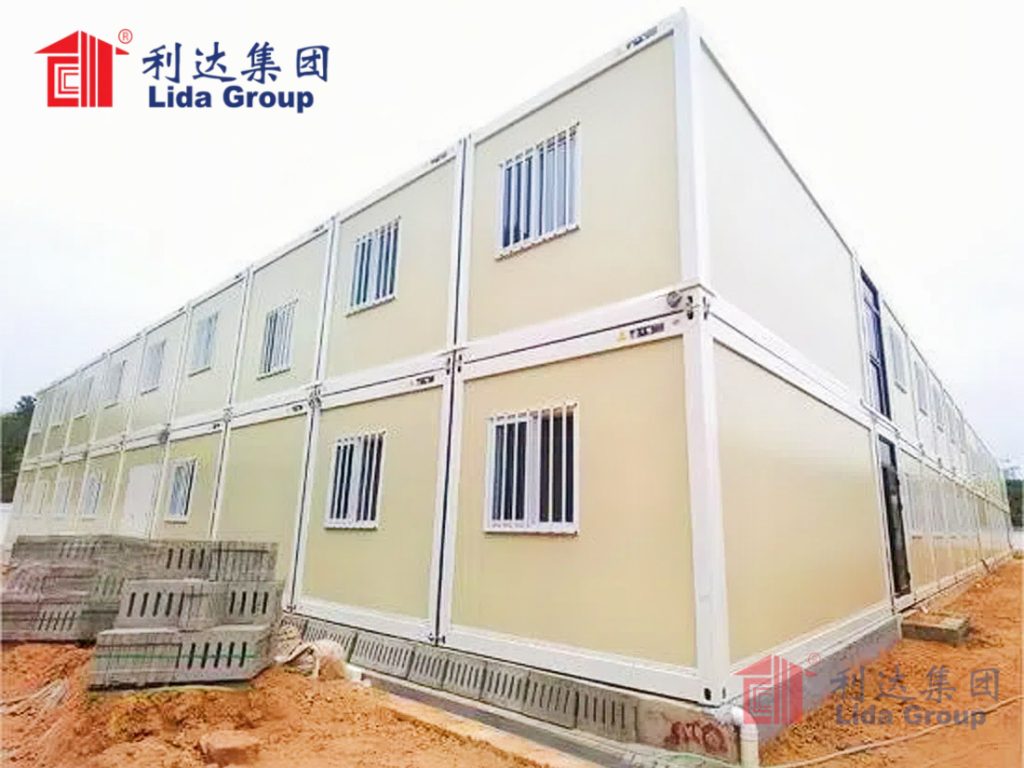
6. Market Impact and Industry Leadership
Lida Group’s focus on comfort has not only improved worker lives but also reshaped the remote site housing market. By proving that prefab container houses can be both efficient and comfortable, Lida Group has set a new standard for the industry—and forced competitors to prioritize livability in their designs.
6.1 Shifting Industry Priorities
Before Lida Group’s entry into the market, most prefab remote housing focused on three metrics: cost, speed of assembly, and durability. Comfort was often an afterthought, with companies assuming that workers in remote sites would “settle” for basic accommodation. Lida Group’s success has challenged this mindset:
- Demand for Comfort: Project operators now ask for “Lida-style” comfort features as a standard requirement, not an upgrade. A 2024 survey of construction and mining companies found that 78% of respondents prioritize “worker comfort” when choosing remote housing—up from 32% in 2019.
- Premium for Quality: Companies are willing to pay a 10-15% premium for Lida Group’s container houses, recognizing that the cost is offset by lower turnover, higher productivity, and fewer safety incidents.
- Regulatory Pressure: In some regions, governments are updating regulations to require better living conditions for remote workers. For example, Australia’s Mining Act (2023) now mandates minimum standards for insulation, ventilation, and sanitation in remote mining housing—standards that Lida Group’s houses already meet.
6.2 Sustainability Leadership
Lida Group’s container houses also align with the global push for sustainable construction. By using prefab manufacturing, the company reduces construction waste by 30% compared to traditional on-site builds. Additionally, many of the materials used—such as recycled steel, low-VOC paints, and renewable insulation—are eco-friendly. The integration of solar panels, heat pumps, and water-saving fixtures further reduces the environmental impact of remote sites, helping companies meet their carbon reduction goals.
For example, a mining company using Lida Group’s houses in Western Australia reduced its carbon footprint by 25% per worker compared to using traditional housing—helping it achieve its target of net-zero emissions by 2030.
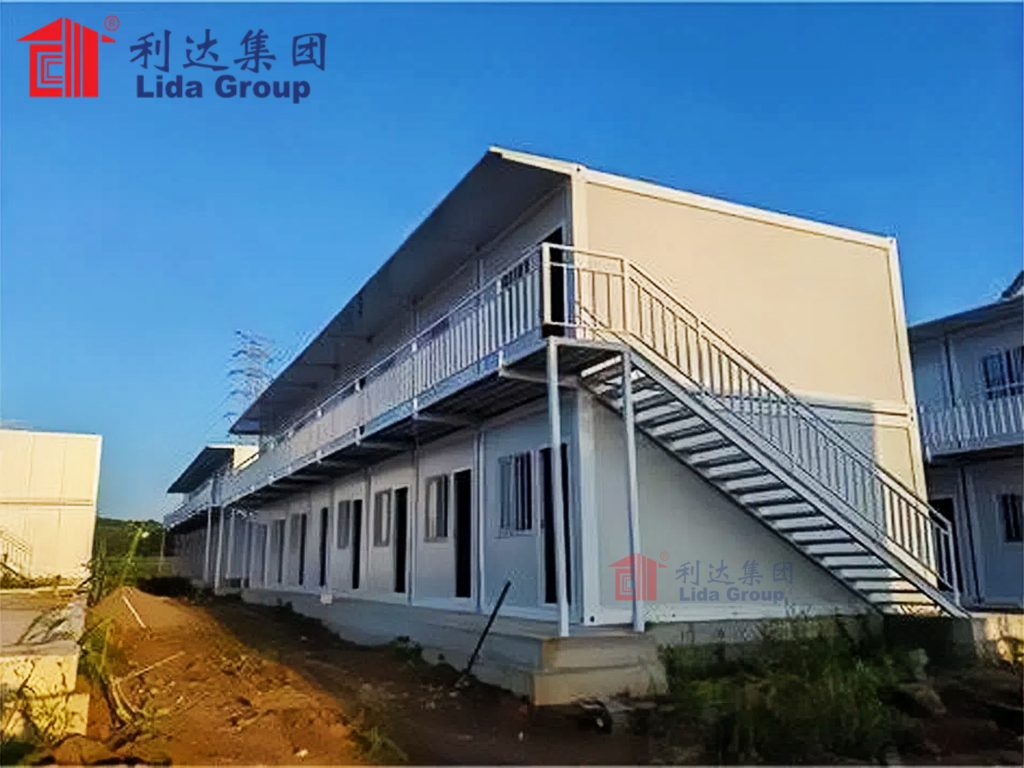
7. Future Trends: The Next Era of Comfort in Remote Housing
Lida Group is not resting on its laurels. The company is investing heavily in research and development to further enhance the comfort and sustainability of its container houses, with three key trends driving innovation:
7.1 Smart Home Integration
The future of remote housing will be “smart,” with IoT (Internet of Things) devices that adapt to workers’ preferences and monitor comfort in real time. Lida Group is developing:
- Smart Climate Control: Sensors that track indoor temperature, humidity, and air quality, and automatically adjust HVAC systems to keep workers comfortable. Workers can also control the temperature via a mobile app—allowing them to pre-warm or cool their rooms before returning from a shift.
- Energy Management: Smart meters that track energy use and suggest ways to reduce consumption (e.g., “Turn off the AC when windows are open”). This not only saves costs but also empowers workers to contribute to sustainability goals.
- Maintenance Alerts: Sensors that detect leaks, electrical issues, or HVAC malfunctions and send alerts to maintenance teams—preventing small problems from becoming major disruptions to comfort.
7.2 Personalization and Customization
As worker expectations rise, demand for personalized housing will grow. Lida Group is expanding its customization options to allow workers and companies to tailor houses to their needs:
- Layout Choices: Workers can choose between different bedroom sizes, kitchen configurations, and storage options—ensuring the space fits their lifestyle (e.g., a worker who cooks frequently might opt for a larger kitchenette).
- Wellness Features: Optional add-ons such as yoga mats, meditation corners, and air purifiers (for workers with allergies) will become more common, as companies recognize the link between wellness and productivity.
- Cultural Adaptations: For global projects, Lida Group will offer cultural customizations—such as prayer rooms for Muslim workers, or larger dining areas for teams that eat together regularly.
7.3 Circular Economy Design
To further reduce environmental impact, Lida Group is designing container houses that are fully recyclable and reusable. Future models will feature:
- Modular Components: Parts that can be easily disassembled and reused in new houses, reducing waste when projects end.
- Biodegradable Materials: Insulation and finishes made from renewable, biodegradable materials (such as hemp or bamboo) that break down naturally if the house is decommissioned.
- Reverse Logistics: A system for collecting and recycling old container houses, ensuring that no materials end up in landfills.
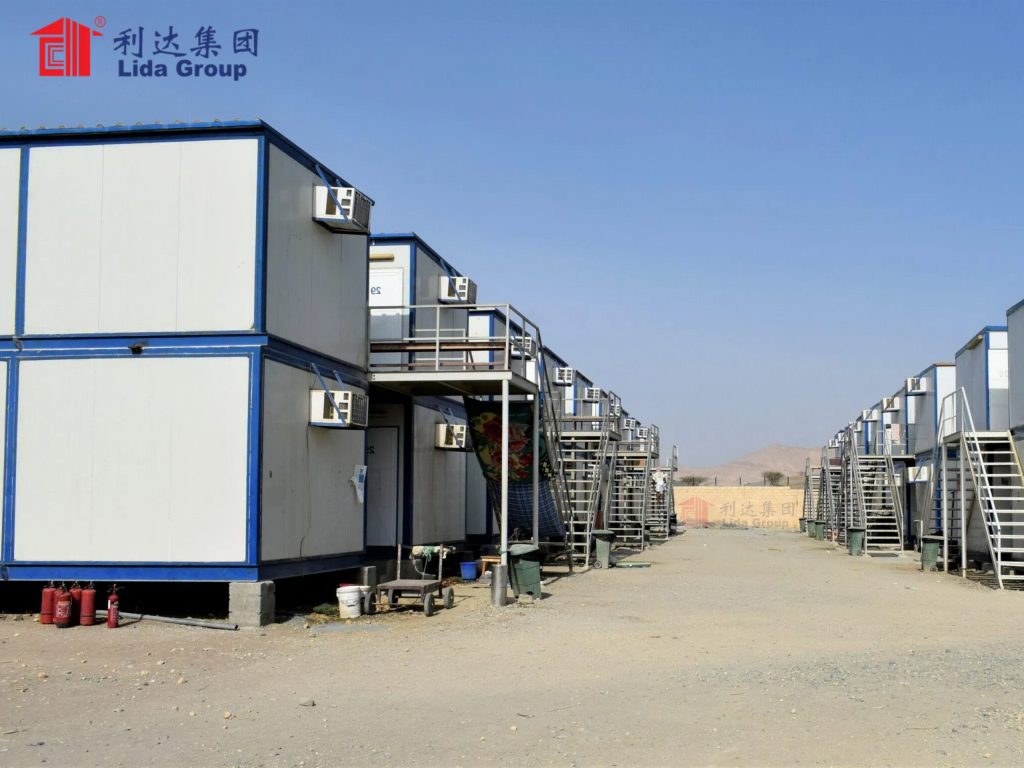
8. Conclusion
Lida Group’s high-quality container houses have transformed remote site living by putting worker comfort at the center of prefab design. For too long, remote workers were forced to choose between employment and a decent quality of life—but Lida Group has eliminated that trade-off. By combining advanced prefab technology (modular design, precision insulation, smart climate control) with human-centric features (optimized space, privacy, warm aesthetics), the company has created housing that is not just functional, but comfortable.
The real-world impact of this approach is undeniable: in deserts, Arctic regions, and rainforests, Lida Group’s houses have reduced turnover, improved worker health, and saved companies money. They have also reshaped the industry, proving that comfort is not a luxury but a strategic investment—and forcing competitors to raise their standards.
Looking to the future, Lida Group’s focus on smart technology, personalization, and sustainability will continue to drive innovation in remote housing. As the world’s demand for remote infrastructure (mines, highways, renewable energy projects) grows, the need for comfortable, sustainable accommodation will only increase. Lida Group is well-positioned to lead this charge, ensuring that remote workers—who play a critical role in global development—get the safe, comfortable housing they deserve.
In short, Lida Group has not just built container houses—they have reimagined what remote site living can be. For workers, this means a better quality of life; for companies, it means better outcomes; and for the industry, it means a new standard of excellence.

Related news
-
Sustainable and Secure: Lida Group's Prefab Building Expertise Delivers Eco-Friendly, High-Quality Container House Communities.
2025-08-27 16:11:28
-
Lida Group's Advanced Prefab Building Technology Ensures Rapid Assembly of Spacious and High-Quality Container Worker Houses.
2025-08-27 16:46:47
-
Why Major Construction Firms Choose Lida Group's Container Worker Houses for Durable and Rapid Prefab Building Deployment.
2025-08-27 15:45:54
contact us
- Tel: +86-532-88966982
- Whatsapp: +86-13793209022
- E-mail: sales@lidajituan.com


